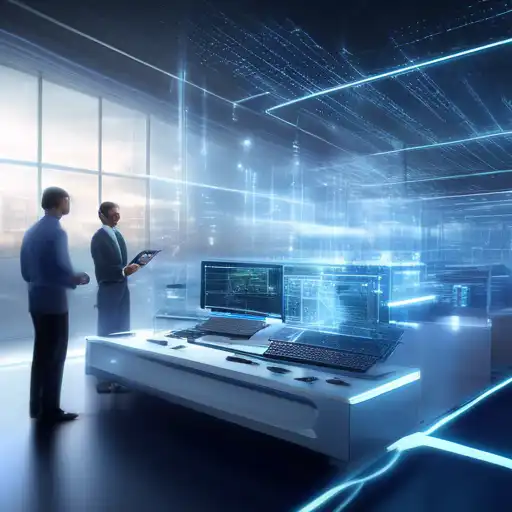Introduction to Edge Computing
In the digital age, speed and efficiency are paramount. Edge computing emerges as a transformative technology, bringing data processing closer to the source of data generation. This paradigm shift not only enhances speed but also reduces latency, paving the way for real-time analytics and decision-making.
What is Edge Computing?
Edge computing is a distributed computing framework that brings enterprise applications closer to data sources such as IoT devices or local edge servers. This proximity to data at its source can deliver strong business benefits, including faster insights, improved response times, and better bandwidth availability.
Benefits of Edge Computing
The advantages of edge computing are manifold. Here are some key benefits:
- Reduced Latency: By processing data near its source, edge computing significantly cuts down the time it takes for data to travel, enabling faster response times.
- Bandwidth Efficiency: It minimizes the amount of data that needs to travel over the network, reducing bandwidth usage and costs.
- Enhanced Security: Local data processing can enhance security by keeping sensitive information closer to its source and reducing exposure to potential threats during transit.
- Scalability: Edge computing allows for scalable solutions that can grow with your business needs without the need for significant infrastructure changes.
Edge Computing vs. Cloud Computing
While both edge computing and cloud computing play pivotal roles in the modern IT landscape, they serve different purposes. Cloud computing centralizes data processing in large data centers, whereas edge computing decentralizes processing, bringing it closer to the data source. This distinction is crucial for applications requiring real-time processing.
Applications of Edge Computing
Edge computing finds applications across various industries. Some notable examples include:
- Healthcare: Real-time monitoring and analysis of patient data can significantly improve outcomes.
- Manufacturing: Predictive maintenance and real-time monitoring of equipment can reduce downtime and increase efficiency.
- Retail: Personalized customer experiences can be enhanced through real-time data analysis.
- Smart Cities: Traffic management and public safety can be improved with edge computing technologies.
Challenges and Considerations
Despite its benefits, edge computing comes with its set of challenges. These include the need for robust security measures, the complexity of managing distributed systems, and the initial investment in infrastructure. However, with the right strategy, these challenges can be effectively managed.
Future of Edge Computing
The future of edge computing is bright, with advancements in IoT, 5G, and AI driving its adoption. As businesses continue to seek faster and more efficient ways to process data, edge computing will play an increasingly vital role in shaping the digital landscape.
For more insights into how edge computing is transforming industries, check out our article on cloud computing and its complementary relationship with edge computing.
